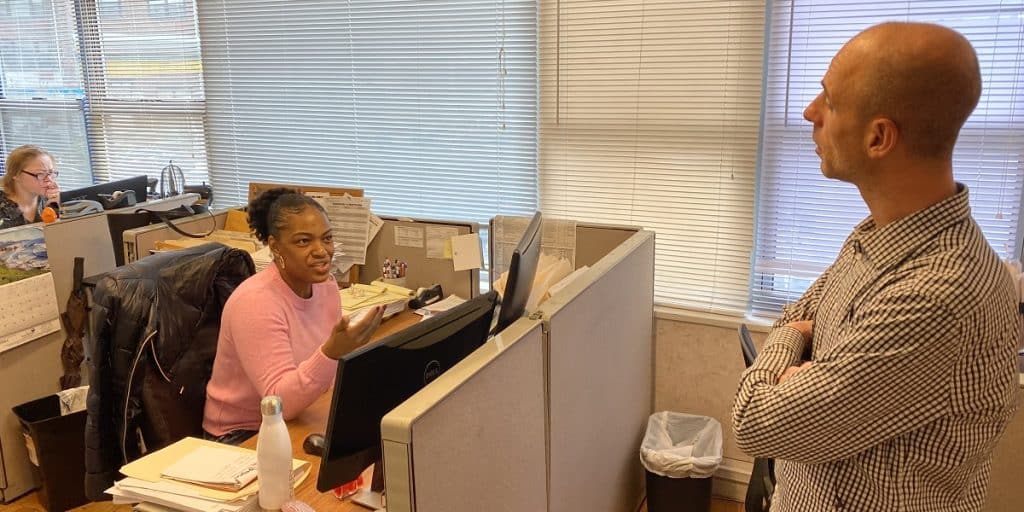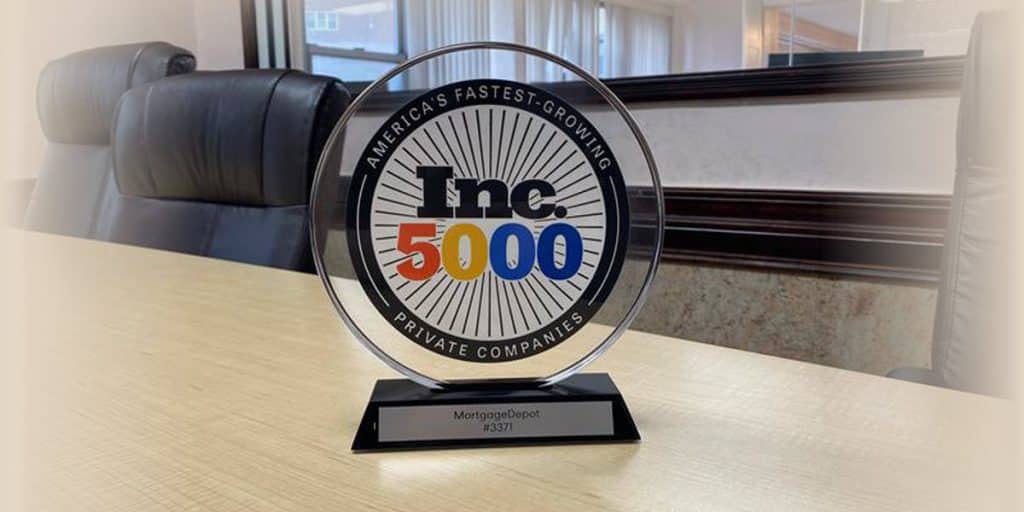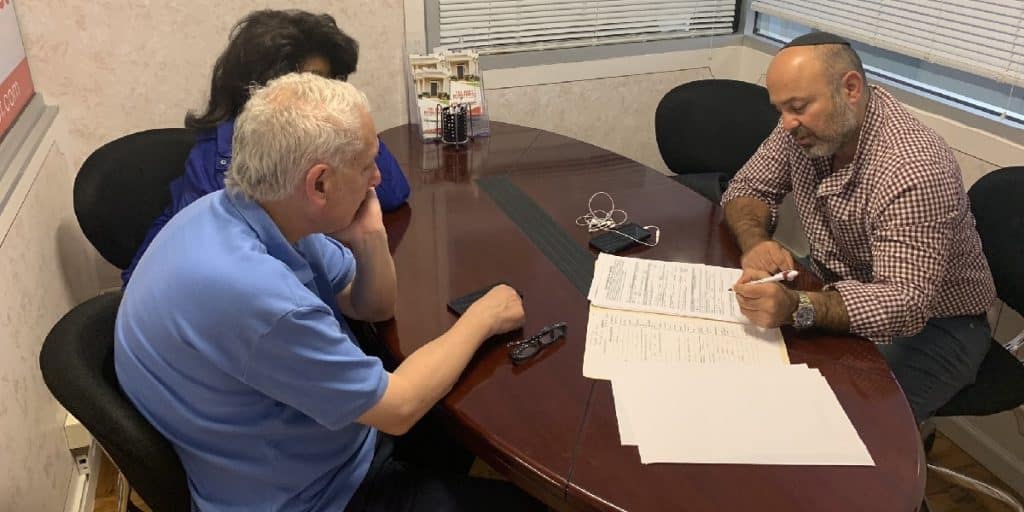
“It is especially important to encourage unorthodox thinking when situations are critical. At such moments every new word and fresh thought is more precious than gold.” –Boris Yeltsin
For the faint of heart, it is a most intimidating time. Traditional thought is being questioned as information on any imaginable subject is available at our fingertips. Paradigms are shifting, parameters are changing, envelopes are being pushed into entirely new shapes by the realities of today’s world. There has never been a time when thinking “outside the box” has been more necessary and more challenging.
The velocity of change is not a lot different in the mortgage business from that in other industries, but it is tempered with several constants: people need money for homes and the market is not efficient. Therefore, for the money to find the people who need it, specialists are still needed. Will that change anytime soon? To a degree. But most experts seem to believe it is a manageable one. Even with the greatest disintermediator of all time looming, the Internet, people still seem to want people to make them mortgage loans. True, many are turning to automated loan origination, as evidenced by gains made in the last year by online originators and the e-commerce units of traditional lenders. But the vast majority are sticking with more conventional channels, and many customers use the Internet to shop rates, then present them to analog originators to be matched. As Jim Noack, CEO of Expede, remarked at the MBA convention, borrowers like to stick with their current financing sources, because “They already have my stuff.”
That said, the degree to which banks and Internet lenders are improving at intercepting borrowers before they ever hit the streets is accelerating greatly over just a year or two ago. It took them a while to break the code, but they are moving past bureaucratic obstacles and creating some excellent, learning interfaces on their websites. Other non-lending companies have gotten into the act, creating origination channels through portals and partnerships. Microsoft’s HomeAdvisor looms, partnered with a brace of traditional lenders, offering a main differentiating factor of automated decisioning and processing. Others offer auctions and other tools, all designed to preempt the efforts of street origination professionals.
Given the evolving condition of loan origination nationally, most successful independent originators focus on the basics: serving their local markets with a vigor and service level virtually no one else can match. And it works. The most important aspect apart from maintaining high service levels is found in taking the message to the street — marketing.
Innovative marketing is the new frontier for independent loan originators. In the past, as Woody Allen said of life, it seemed that 50 percent of street loan origination was “showing up.” In recent years, and particularly during refinance booms, it seemed that everyone was showing up, with one or both hands outstretched for loans. The new century seems to have righted that condition, thankfully, leaving more serious professionals to compete for the smaller volumes currently available. Seriousness, of course, is not enough without innovation.
Apart from “showing up,” in a figurative or literal sense, other tools are rapidly going by the wayside. Rate sheets, for example, can label an originator as “old school” and unoriginal. Attending Realtor sales meetings are still good, but the meetings are becoming harder to get unless the originator has something unique to say. Newsletters are useful, but with legions of third parties able to provide them, along with advances in desktop publishing, they have become a bit like noses-everybody has one. Advertising still works when targeted appropriately, but once again, its utility fades when everyone uses it the same way.
So how does the enterprising originator stay “top of mind” with his or her clients, and what tools are the best ones to employ in the never ending effort to stand apart from the crowd? It all starts with something, like a nose, that everyone has to a greater or lesser degree: the imagination.
Who, after all, does not respond to sameness with ennui? Not all that long ago, television commercials were 60 seconds in length. Today, 60 seconds seems like hours for a commercial message from a single sponsor. Spots of 15, 20, and 30 seconds are far more effective, because they require a crisper message. And viewers want variety in the images they see and the ideas they process. Likewise, you should consider introducing variety into your own marketing campaigns.
Perform a Marketing Study
This is a logical first step, and does not necessarily mean hiring a firm to do a full-blown analysis resulting in a document the size of a phone book. An informal study of your market is something you should get in the habit of performing twice a year, like seeing your dentist. Things change, evolve, and are subjected to forces beyond your immediate control, resulting in market shifts as well as newly exposed gum lines. And in the words of vintners and cheese makers everywhere, never underestimate the power of age. Time is as much a contributing factor to evolving markets as supply and demand. All of these factors are good reasons to look at your area under the microscope from time to time, and ask questions like:
What has worked in your area? Has it always been a government market, now changing with rising home prices, or has age and appreciation matured the local buyers from first-timers with new families to near-empty nesters? Any of these changes would indicate a shift in tactics. At the same time, however, take a look at the marketing techniques that have worked in the area, historically. Some of them may still be fresh, or at least able to be updated for continued use without becoming “old hat.” Some people just like to wear hats, old or not, and they may be in your market. A realistic examination of those marketing ideas that have worked in the past, whether by you or your most envied competitors, may reveal some new twists you can apply to give them new life and renewed relevance.
What is overdone in your area? If you are working in a mature area rather than one dominated by new developments, chances are good traditional tactics have been done to death. Look closely at the marketing campaigns you personally recall and list the most popular methods the top people have used. If everyone is using donut deliveries to get past the receptionist in Realtor offices, you will do little to distinguish yourself by showing up with a box yourself. And if everyone else is begging to be included in weekly sales meetings, do you want to follow suit? On the other hand, if comparatively few are speaking at those meetings, perhaps you should raise your hand, especially if you have something significant to say when the time comes.
Few ideas are truly new. But there are many which have been overlooked for a long time in favor of the “me too-ism” that prevails in competitive environments. While it is a time-honored tactic to match the competition in features and value, marketing oneself demands more creativity and innovation. Otherwise, you run the risk of actually helping your competitor by proving the maxim, “Imitation is the sincerest form of flattery.”
What do the masters say? Most top producing originators are “out of the box” thinkers, constantly experimenting with new marketing techniques. It makes sense to adapt some of their creative strategies for your own program. Attend conferences and seminars (including M.O.M.’s own Superstars Seminars) where they speak. Read their books and articles and listen to their audio-tapes (including SuperStar Profiles and the Success Audio programs). Some have written books or developed marketing kits. The acknowledged masters share how they achieve the astounding numbers they can rack up year after year. You may have an opportunity to participate in a mastermind-type program, where superstar originators gather on a regular basis.
Of course, the key is then to take their secrets of success and make them work for you. You’ll probably have to tweak them a bit to match your personal style and individual market. However, you’ll already know that these are proven strategies.
Plan the Campaign
Upon listening to your muse and mapping out some of the things you want to try, it is time to plan how, when, and where it will happen, along with how much you can afford to invest. These components must work in harmony, for hopefully obvious reasons; it will serve your effort poorly to have the best ideas on the planet and lack the funds to implement them.
Develop techniques to command attention. Once you get past the me-too temptations, perhaps reinventing some tried and true tactics along the way, focus on attention-getting techniques. An example from a summer or two ago comes to mind as a variation to one of the oldest tactics, taking refreshments to the customer. Two people at the Salt Lake City office of North American Mortgage came up with a new twist on this age old attention-getter, matched perfectly to Salt Lake’s 100 plus degree summers. They rented an ice cream truck and showed up at their Realtor’s offices, music playing, with complementary ice cream bars and other frozen treats. This was a simple idea that commanded attention in a fun, positive way.
Consider conducting a mini-focus group. Large companies test market concepts and products using this technique, and you can, too, but on a more modest basis. Most experienced originators have a group of friends and clients whose opinions they trust. Polling this group could yield some good information not only regarding what has worked in the past, but things they have always looked for from their preferred originators. The group could be assembled for a working lunch or breakfast, or perhaps tempted with a special outing of some kind which would facilitate discussion. Or, they could be polled individually using a questionnaire you can devise, as an adjunct to your regular call schedule. As a general rule, people like to be asked their opinions, particularly by individuals they care about, since their answers can evolve into meaningful help.
Consider specialized markets. General market strategies are fine, but sometimes honing in on specialized markets can lead to a string of innovative concepts. Two of the most obvious specialized markets today are various ethnicities and age groups. If you are a member of a distinct ethnic group, there may be opportunities in dealing within that group in your market area. This can be a valuable service, particularly if you speak the language and can provide new levels of understanding regarding the homebuying and financing process.
By the same token, age is an increasingly important factor in American society, with a baby boomer turning 50 every few seconds. Priorities, concerns and orientations change as children leave the nest, and potential customers look more to retirement and wealth-building strategies. Keep the specialized markets in mind as you craft ideas and design materials, including your website (you do have a website, don’t you?). If, for example, you include photos and other graphics, use images that depict the group you are marketing to. If going for baby boomers, you probably don’t want to use photos showing young families. Along the same lines, if you are dealing with an ethnic group, consider designing your site to reflect cultural inputs from their mother country, such as symbols, flag colors, and so forth. The path of least resistance here is to simply translate an English site into the appropriate language, but that is probably not the path toward innovation.
Understand the strategy. The point is not just to create attention. It is to create the positive attention you need to illustrate differentiating factors setting you apart from the competition. An unfocused message can leave the intended audience confused, and maybe even a little insulted.
Remember the plethora of “dot com” ads from the Superbowl? They were mostly just noise, and it became hard to figure out who they were advertising, or even what they were advertising. The collective priority from all the ad firms seemed to be that merely getting attention was the order of the day, trying to reflect the supposed youth and spontaneity of those dot com firms. Perhaps that would have been a valid strategy if only one or two had gone that route, but virtually all of them did, leaving the audience (the second largest of the year) wondering what they had seen. The more effective ads included Fed Ex’s “Wizard of Oz” spoof and EDS’s “Cat herding” commercial (which subsequently won an Emmy) because they caught attention, delivered a message and were memorable.
Mix it up. Plan several components and deploy them during the year on a pre-arranged schedule. This is precisely what clothing and other retailers have done for generations, with fall, spring, summer, and winter “lines.” Consider having a similar rollout schedule, and your clients will come away with the impression that you did your homework, timing, and “theme-ing” your promotions appropriately during the year. That does not mean you can wait until the season is upon you to plan, however. If you know you want a summer promotion around July 4th, the time to plan it is now. And if, by the way, you are planning a July 4th promotion, you may have missed the point of this article, which is thinking outside the box. Certainly nothing wrong with a July 4th observance, given its historical importance to today’s world, but chances are good that everyone is considering such a promotion. Perhaps an observance the weekend after or the weekend before would be more appropriate. One marketer replaced July 4th with July 14th, on which the French observe Bastille Day. The twist was offering french fries, french bread and other delicacies with an Inspector Clousseau accent and stereotypical French rudeness. Risky, but it worked.
Understand the budget. You do not have to break the bank to be innovative, and be cautious to keep your more grandiose ideas under fiscal control. The first round of most creative processes is to let the imagination soar unrestricted by the restrictions imposed by crass monetary reality. Just make certain your thinking alights nimbly upon terra firma when appropriate. It might make great sense to rent the Goodyear blimp to hover over your neighborhood supermarket to make sure everyone in the area sees your message – but is it realistic? Probably not. The smaller, helium-filled mylar variety with your name and logo might, however. Be sure to match your aspirations to your pocketbook, taking into account the cost per anticipated loan and other relevant factors. The ideas and experiences mentioned in the sidebars cover a variety of concepts with an accompanying variety of expense ranges. As a general rule of thumb, if your first impression is that the expense of a campaign tactic is too great, it probably is.
Gauge the Results
All effective marketing campaigns need a mechanism to track results. Not just in terms of how many loans have come in, but in terms of the relationships you have established that will allow the loans to flow later. That’s the difference between thinking strategically and thinking tactically. Do not assume that your campaign is a failure because the flow of loans did not increase overnight. The exact opposite may be true, and if you abandon it early, you might never see the fruit from the seeds you planted at the outset.
Think “metrics.” This does not refer to the global standards of distance measurement. “Metrics” refers to keeping statistics to enable quantifiable measurement of results. How many calls, how many referrals, how many responses, how many applications, how many approvals, denials and fundings are all part of the metrics you should employ to track the results of your campaign. A little thought and a simple Excel spreadsheet should do the trick.
Inside “the box,” it is warm, safe, secure – and a bit dull. Outside is a riskier and more hostile environment, but it also offers the opportunity for greater rewards. And the term “risk” is a relative thing, after all.
Look at other industries and assess those unique concepts that stand out to you as a consumer. What can be translated into your microcosm that would give you resonance with your clients? And consider the notion that it’s better to be aggressive and a little extreme, then perform a tactical retreat if the extreme approach is not working somehow.
This issue is devoted to “out of the box” thinking and its application in all manners of marketing campaigns, from the very large Rose Parade variety, to the smaller Poker Night approaches. Each has its merits, limitations and applicability, but each is united by the simple concept that sameness and mediocrity often harmonize. The different, the creative and the unique, while not always proving symphonic in their results, at least help provide the differentiating factors that keep “out of the box” dwellers from becoming trapped inside.
by James Hennessy
Have questions or need help?
Call us now at 800-220-LOAN
Request a call back or email us your questions!







